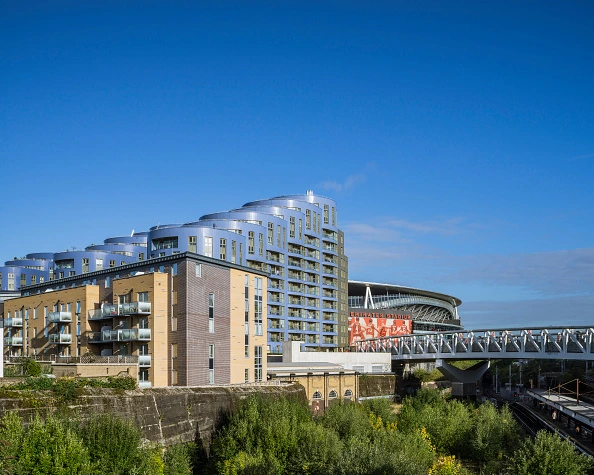
The Northern City line is a six-stop underground route from Moorgate to Finsbury Park. (It’s officially if confusingly, known as the Moorgate line.) But, unlike other underground lines, it is not part of Transport for London’s (TfL) empire, and is not displayed on a normal tube map. Two of the stations, Essex Road and Drayton Park, aren’t on the underground network at all.

The line has changed hands countless times since its creation a century ago. It now finds itself hiding in plain sight – an underground line, not part of the Underground. So why exactly is the Northern City line not part of the Tube?
The schemes of the Northern City line
As with many such idiosyncrasies, the explanation lies in over a century’s worth of schemes being cancelled and going awry. The story starts in 1904, when the private Great Northern Railways, which built much of what is now the East Coast Main Line, created the line to provide trains coming from the north of London with a terminus in the City.
This is why the Northern City line, unlike a normal Tube line, has tunnels wide enough to be used by mainline trains.
Pretty soon, though, Great Northern decided that this wasn’t such a bright idea after all. It mothballed plans to connect the Northern City up to the mainline, leaving it to terminate underneath Finsbury Park, scrapped electrification and sold the line off to Metropolitan Railways – owners of, you guessed it, the Metropolitan line.
Metropolitan Railways had big plans for the Northern City line too: the company wanted to connect it to both Waterloo & City and Circle lines. None of the multiple variants of this plan ever happened.
The next proposed extension, planned in the 1930s once the London Underground had become the domain of the (public sector) London Passenger Transport Board, was the Northern Heights programme. This would have seen the line connected with branch lines across north London, with service extended to High Barnet, Edgware and Alexandra Palace: essentially, as part of the Northern line. The plans, for the main part, were cancelled at the advent of the Second World War.
What the war started, the Victoria line soon finished. The London Plan Working Party Report of 1949 proposed a number of new lines and extensions: these included the extension of the Northern City Line to Woolwich (Route J) and Crystal Palace (Route K). The only one of the various schemes to happen was Route C, better known today as the Victoria line, which was agreed in the 1950s and opened in the 1960s.
The new construction project cannibalised the Northern City Line’s platforms at Finsbury Park, and from 1964 services from Moorgate terminated one stop south at Drayton Park.
In 1970, the line was briefly renamed the Northern Line (Highbury Branch), but barely a year later plans were made to transfer it to British Rail, allowing it to finally fulfil its original purpose.
Derailed by an accident
Before that could happen, though, the line became the site of the deadliest accident in London Underground history. At the height of the morning rush hour on 28 February 1975, a southbound train failed to stop at Moorgate, instead ploughing into the end of the tunnel. The crash killed 43 people. The authorities responded with a major rehaul of safety procedures; Moorgate station itself now has unique timed stopping mechanisms.
The last Tube services served the Northern City Line in October 1975. The following year, it reopened as part of British Rail, receiving trains from a variety of points north of London.
Today, despite a central location and a Tube-like stopping pattern, the line is only really used for longer-scale commutes: very few people use it as a part of the Tube.
Only 770,000 and 358,000 people each year enter and exit Essex Road and Drayton Park stations, respectively, according to the latest figures available. These usage stats look like those for a station in zone seven, not one in Islington.
One reason for this might be a lack of awareness that the line exists at all. The absence from the Tube map means very few people in London will have heard of it, let alone ever used it.
Another explanation is rather simpler: the quality of service. Despite being part and parcel of the Oyster system, it couldn’t be more different from a regular tube. The last, and only, time I used the line, it ran incredibly slowly, while the interior looked much more like a far-flung cross-country train than it does a modern underground carriage.
[Read more: London’s Charing Cross and Embankment stations have a confusing history]






